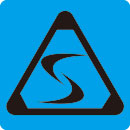

| solid CBN insert |
| thoroughly brazed |
| PCBN tipped insert |
| C (80° diamond) |
| D (55° diamond) |
| T (60° triangle) |
| V (35° diamond) |
| S (90° square) |
| W (80° hexagon) |
| Full face PCD insert |
| PCD tipped insert |
| C (80° diamond) |
| D (55° diamond) |
| T (60° triangle) |
| V (35° diamond) |
| W (80° hexagon) |
Home >> Technical FAQs >> Polycrystalline diamond pcd turning inserts with chip breaker |
||
Polycrystalline diamond pcd turning inserts with chip breaker |
||
The chip breaker represents an important advancement in cutting technology. Before chip breakers were included in cutting tool inserts, chip formation posed a major challenge to many machining processes, especially turning. In particular, when unattended machining was required to meet up with high demand, formation of chips would clog the conveyor belt and other sections of the machine. This would require the machinist to stop the operation and spend precious time clearing away the chips. But with the addition of chip breakers to tool inserts, the formation of the chips can be controlled and heat can be transfered away from the tool and workpiece more efficiently. The following is a brief description of the factors to consider when choosing polycrystalline diamond pcd turning inserts with chip breaker. |
||
Chip Shape of Various Workpiece Materials |
||
Cutting Data: Feed Rate and Lead Angle |
||
Similarly, lead angles influence the chip flow, length, and thickness. Large lead angles require high cutting forces and they produce wider and shorter chips. So they may be used for roughing applications. On the other hand, small lead angles require low cutting forces and produce soft, smooth chips with less chip curling and they are more suitable for medium or finishing applications. The lead angle determines the shape of the tool insert. So you should select the most appropriate shape for your workpiece and application. Square, rectangular and round shaped inserts perform better during roughing while triangular and diamond shaped inserts are more appropriate for finishing operations. |
||
Conclusion pcd inserts offer high metal removal rates, faster machine setup, quicker cycle times, and greater flexibility, it is recommened preferred machining method for Non ferrous Aluminum alloys, tungsten carbide, copper and non metals materials of ceramic, rubber, wood etc. and reduce the machining cost per part in finish turning. |
||
Despite these advantages, hard turning has sometimes had issues with poor chip control causing surface scratching and bird-nest formations. SWIFT solved these problems by integrating special chipbreaking geometries, giving customers total control of their hard machining. |
||
|
||
Inserts with chipbreaker provides a chipbreaking solution for applications requiring more toughness, improves surface quality to reduce scrap rates. And pcd inserts require less machine stops due to swarf issues to improve machine availability, less bird-nest formation to reduce clean up time. |
||
Those are some of the most important criteria to consider when you are selecting polycrystalline diamond pcd turning inserts with chip breaker for your machining operations. After you have selected the best insert for your workpiece material and application, you should carefully adjust all necessary cutting data to produce the desired shape of chips. |
| HOME | About us | PCD insert | PCBN insert | Site map | Contact us | Technical FAQ |
We export PCD inserts to world wide countries, such as USA united states, Germany, UK united kingdom, Italy, France, Turkey, Russia, Saudi Arabia, United Arab Emirates, Ukraine, Israel, Canada, South Africa, South Korea, Japan, Australia, New Zealand, Finland, Sweden, Norway, Danmark, Switzerland, Poland, Czech,Ireland, Holand, Belgium, Greece, Croatia, Spain, Portugal, Egypt, India, Philippines, Cambodia, Thailand, Malaysia, Singapore, Indonesia, Mexico, Brazil, Colombia, Chile, Argentina etc. |
| Contact: Richard | Tel: +0086-13929967797 | E-mail: sales@pcd-insert.com |